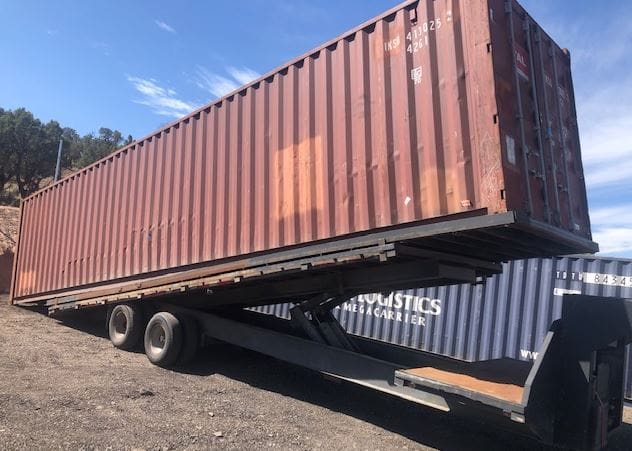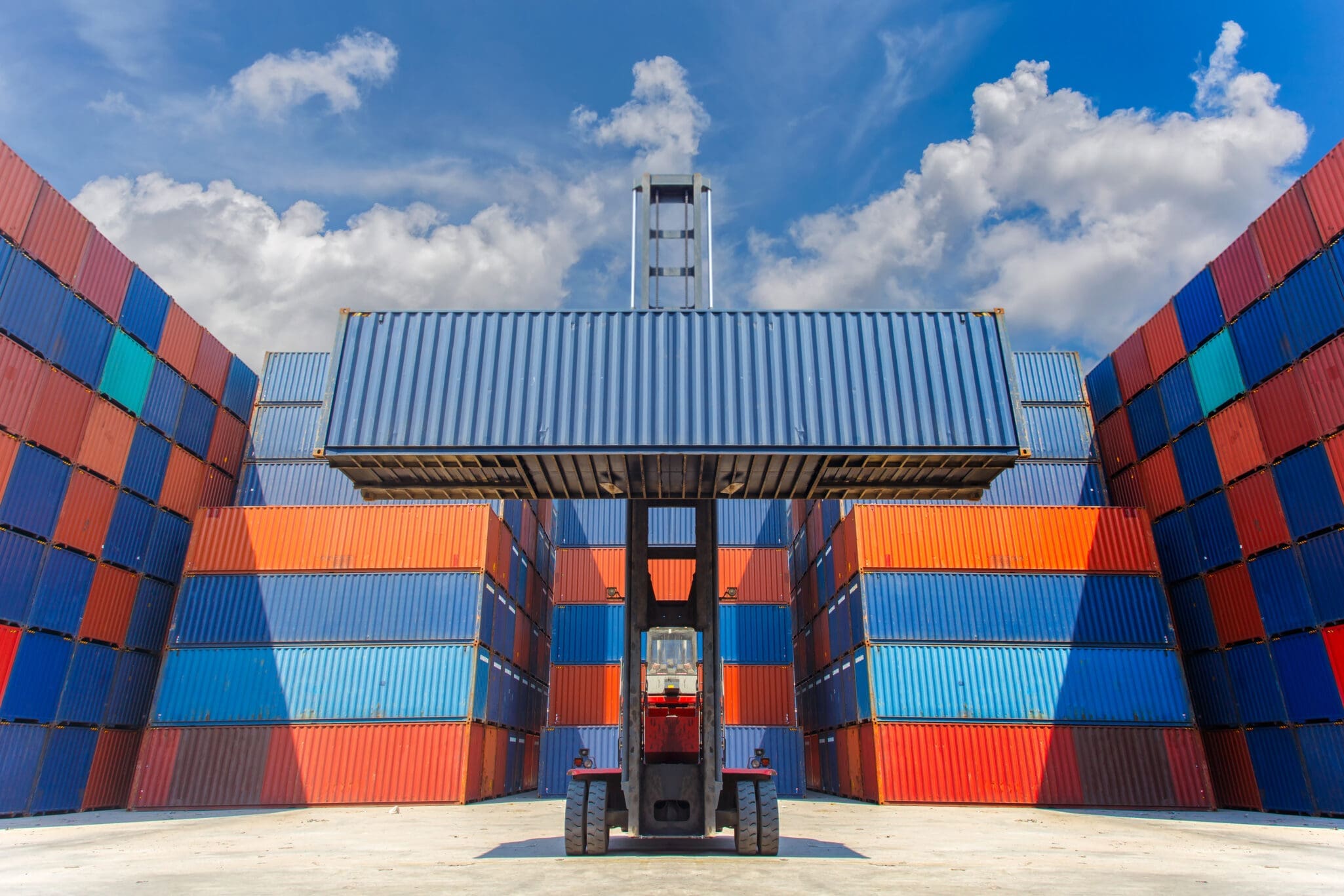Proper delivery preparation is important after purchasing a shipping container to avoid unnecessary costs, delays, and damage to your property. Container Sales Group takes this matter seriously and we work closely with every customer to ensure they have complete transparency into the delivery process to prevent any unnecessary surprises. Below are a list of things to consider to have a successful shipping container delivery.

Types of Shipping Container Delivery Trucks
Tilt Bed Truck (Rollback or Roll-Off) – Moving a container less than 200 miles, we recommend using a Tilt Bed Truck (also known as a rollback or roll-off truck). The bed of this truck will hydraulically lift behind the truck cab at an angle to let the container slide off with ease as the truck pulls forward. This means that the driver will arrive on-site and set the container on the ground with no additional equipment.
Flatbed Truck or Step-Deck Trailer – For long delivery distances over 200 miles, we recommend using a flatbed truck or step-deck trailer which are typically the most available and affordable transportation methods. Flatbed trucks can easily transport 20 & 40 ft standard (8’ 6” high) containers. However high cube (9’ 6” high) containers must be delivered on a step-deck trailer, because of highway height restrictions. The only downside to a flatbed or step-deck truck is it requires a forklift or crane to remove the shipping container from the truck at the time of arrival.
Side Loader Truck or Truck Mounted Crane – A side loader is essentially a truck fitted with a loading system operating on one side for handling shipping containers. This method is ideal for the delivery of containers that need to fit into constricted spaces or for moving a container over an obstruction like a wall or fence. This truck eliminates the need for a crane or forklift.
Container Sales Group uses a Tilt-Body Truck within 200 miles or less of the delivery site. For longer distances, we use a Flatbed Truck which requires a forklift or heavy piece of equipment to remove the container from the bed of the truck.
Ready to purchase a shipping container? Reach out today to get a quote from the best in the industry!

Shipping Container Delivery Requirements
Straight-line Space Needed – The Tilt Bed Truck will back up to your delivery area and slowly slide the container off the trailer as the truck pulls forward.
- 75ft. – for 1 x 20 ft. container
- 120ft. – for 1 x 40 ft. container or 2 x 20 ft. (moved together)
12 ft. Width Clearance –Trucks make wide turns, so make sure there is enough space to turn into your property and get between gates or other obstructions.
16 ft. Height Clearance – Remove any obstacles such as overhead wires or tree branches that might hinder the container’s placement – The tilt body truck bed will hydraulically lift behind the driver’s cab as the container slowly slides off on the ground as the truck pulls forward.
Level, Solid Ground – Ensure a dry, hard, and level delivery site. With no muddy areas that could cause stability and sinking issues. If your ground is not firm and level the container doors may be hard to open and close.
Delivery Location – Select a location that provides easy access for the delivery truck driver. Consider factors like proximity from the road, available space, and any potential obstacles.
Sufficient Space for Safe Delivery – Measure the chosen site to ensure the delivery driver has enough room to accommodate the shipping container dimensions. Keep in mind the truck driver must safely maneuver into the dedicated space.
Ready to purchase a shipping container? Reach out today to get a quote from the best in the industry!
Things To Consider
Wooden Blocks or Railroad Ties (if needed) – If your ground is uneven, consider placing wooden blocks or railroad ties or other stable materials to create a level surface.
Decide Container Door Orientation – Determine which way you want the doors of the container coming off the back of the roll off truck. Do you want the container doors facing the truckers cab ( hitting ground last) or facing rear of truck ( hitting ground first )?
Communicate with the Delivery Truck Driver – Once the shipping container is lifted and placed on the delivery truck at the depot facility the driver will call you and advise the container is on its way. He may ask you for any additional directions to your location. So, at time of delivery, it is important to provide 2 delivery contacts with telephone numbers. If, unforeseen weather conditions arise ( such as rain and snow ) promptly contact the delivery team to reschedule if needed. Provide essential information to the driver or Container Sales Group, such as site specifics and any potential challenges.
If your site is not prepared and the delivery truck arrives at your location with the shipping container, the shipping container may not be placed exactly where you need it, but as close as the driver can get. If tree limbs have not been removed this could cause damage to your shipping container at your cost. If the delivery truck gets stuck in soft ground, you will be responsible to hire a wrecker.
With proper preparation, you can avoid unnecessary cost, damage, and disappointment. Working with a professional and experience shipping container vendor like Container Sales Group can help you avoid unnecessary costs, property damage and disappointment. We want you to have a hassle-free delivery. Call us at 888-320-5938.


